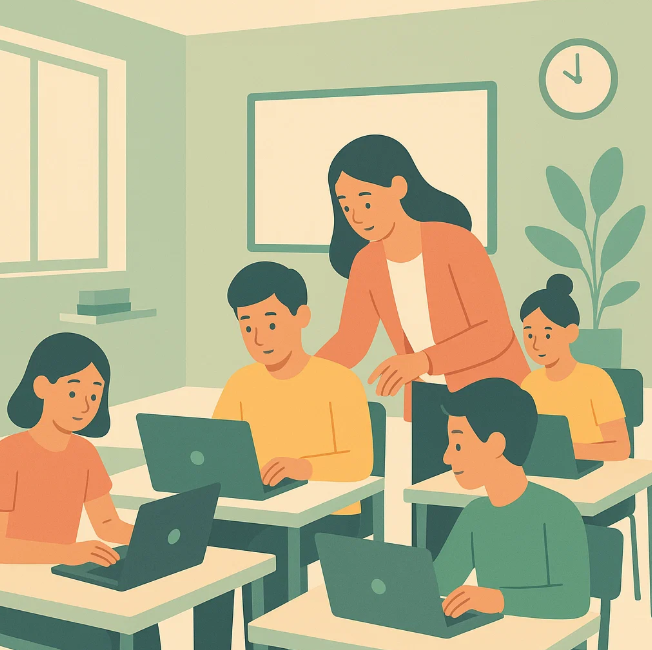
There’s no question that AI is rapidly reshaping classrooms worldwide. From lesson planning to personalised learning, teachers are using this advanced technology to cut back administrative workloads and focus on what truly matters – helping students learn.
Interestingly, Australia has emerged as a leader in educational AI.
In one of the largest global deployments of AI in education, the NSW Department of Education-built NSWEduChat – – which offers the data protection, privacy and ethical standards that commercial AI chatbots don’t – scaled statewide to more than 100,000 public school teachers in Term 4 2024. According to data from the trial, teachers saved up to ~1 hour per week on administrative duties.
Meanwhile, Brisbane Catholic Education (BCE) continues to deploy Microsoft 365 Copilot to 12,500 educators – the largest K-12 rollout globally – with trials reporting that educators are saving about a day per week. BCE has also launched a “world-first” Catholic CoPilot chatbot across 146 schools aligned with Rome’s Call for AI Ethics.
Best of both worlds learning
Campion Education’s Digital Landscapes in Australian Schools 2025 Report shows that a staggering 78% of Australian schools are using AI tools in their edtech, with more than 20% intending to either introduce or raise their use of AI tools for teachers and/or students in year ahead.
In the meantime, many schools are prioritising a balance between online and traditional teaching methods to diversify lessons.
Campion Education found that more than half (53.9%) of those surveyed described their school as set up for dual learning, combining digital and print resources, and while 32.9% are highly tech-enabled, many still choose a blend.
When it comes to the key drivers behind this dual approach, most schools using it cite the need to preserve tactile learning and reduce digital distractions. In this way, the respondents of Campion’s study stressed that print is not a “fallback” per se, but pedagogically effective.
After the phone bans went into effect, school principals in NSW reported that 87% of students were less distracted, with a whopping 81% seeing improved learning. Meanwhile, schools in South Australia saw a massive 63% drop in critical social-media incidents – reducing pressure to be “all-digital.”
Ongoing training and resources critical moving forward
One company that has been at the forefront of this trend is Logitech – an enterprise-grade leader in workplace setups that has been helping hybrid companies and workers be productive, regardless of where they might be located.
According to what the company has seen in Australian education, the dual approach is most common in primary education, where schools utilise tools that combine the best of online and traditional learning to support early development.
Damian Lepore, Logitech’s ANZ managing director, said helping Australian K-12 schools navigate evolving technology and AI is a strong focus area for the company in 2025.
“We instil confidence in teachers and students by designing solutions that support a blended learning approach, combining digital and traditional methods to foster creativity and collaboration in the classroom,” Lepore told The Educator.
“As EdTech continues to evolve, additional training and resources to support teachers in adapting to new digital tools will be critical to ensure successful implementation.”
Lepore said that when introducing new technologies in the classroom, it is critical for school leaders to consider how these will integrate with existing tools — ideally supplementing them rather than replacing them altogether.
“Moreover, educators should meet students where they’re at in their own digital journeys, provide continual support and receive feedback when testing out new tech, such as headsets or keyboard cases.”
The Campion report noted that more than half of Australian schools plan major digital changes in the next year – shifting to cloud systems, AI, new learning platforms, digital resources, and e-books. Looking ahead, Lepore said Logitech is eager to continue providing technology support to Australian schools as they plan digital upgrades.
“We partner with students, educators and ergonomics specialists to deliver EdTech products that directly meet classroom needs,” he said. “Logitech also offers ongoing assistance through our dedicated education customer care and maintenance teams.”

